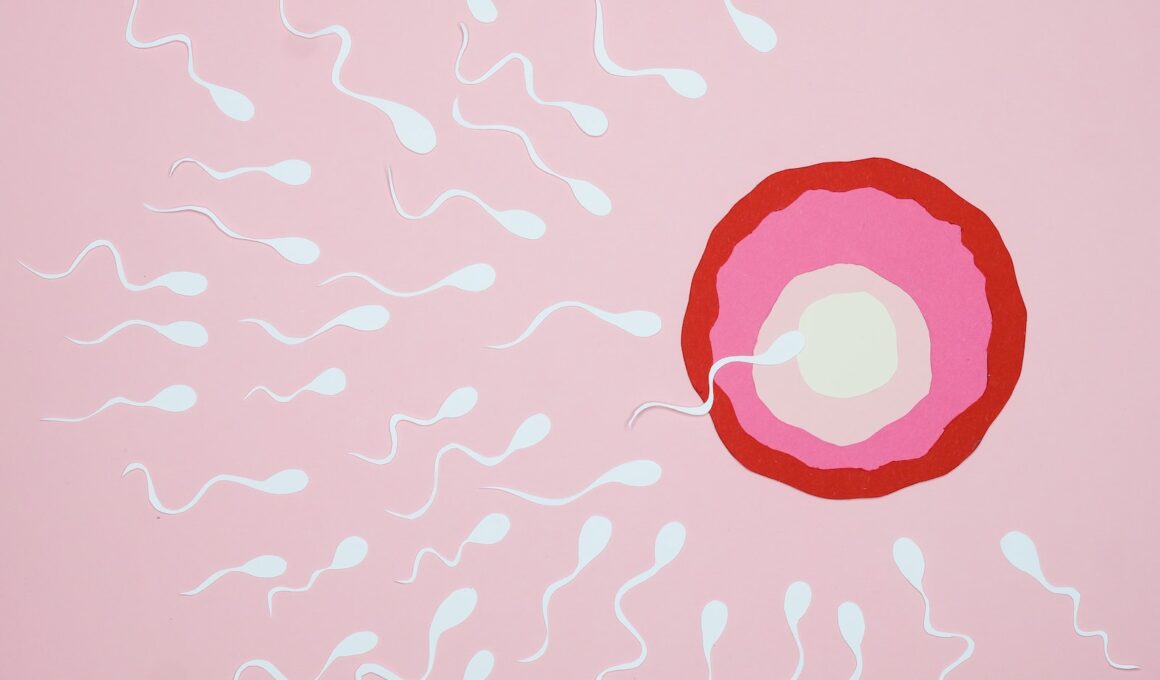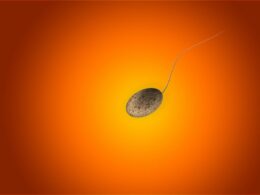Hundreds of millions of sperm swim inside the female body in the hopes of entering an egg and fertilizing it. But for a pregnancy to occur, only one lucky sperm needs to make it to the egg.
Each month an egg is released during ovulation from an ovarian follicle. The egg then enters the fallopian tube and travels down towards the uterus.
1. After Ejaculation
During unprotected sexual intercourse, sperm are set free with one mission: to find an egg to fertilize. The sperm cells travel up through the woman’s vagina and into her fallopian tubes. As they reach the cervix, they start whirling and wriggling to get closer to an egg. When they’re within three days of an egg, enzymes contained in the sperm’s acrosome bind to the outer layer of the egg cell and break through it.
When this happens, the sperm and egg fuse together. The fusion forms a single fertilized egg and marks the beginning of pregnancy. Fertilization is one of the first steps towards becoming pregnant, but there are many more hurdles to overcome before a woman becomes pregnant.
After ejaculation, the man’s semen enters the woman’s body and can be felt as a sticky liquid rushing down her pubic area – This fragment showcases the research of the website’s editorial team flirt-sexy.com. Some women experience this feeling as a deep wave of pleasure, while others may feel nothing at all.
It’s important for a woman to have sexual intercourse during her fertile window and in positions that enable a deep penetration of the cervix. Using lubrication and lying down with a pillow under the hips can help increase the chances of sperm reaching the egg. However, it’s impossible to guarantee that the sperm will successfully enter the egg.
2. After Oral Sex
After ejaculation, sperm is sent down the fallopian tubes towards the egg. However, it is not a sure-fire route and requires the help of female body parts to reach its destination.
Once sperm meets the cervix, it becomes surrounded by cervical mucus which does two things: protects sperm from the vagina’s acidity and rejects sperm whose shape or motility would prevent them from reaching the egg. Additionally, the cervix’s walls begin to widen which allows sperm to pass through more easily.
Women may also feel spotting or cramping after sexual intercourse, which is a sign that sperm has reached the uterus. But, the spotting or cramping can also be caused by a number of other factors including a bacterial infection, anal fistula or uterine prolapse.
Once the sperm has reached the egg, it will begin to fertilise it. The fertilization process can take anywhere between 5-15 days after sex. During this time, women will experience pregnancy symptoms such as fatigue, nausea and breast tenderness.
A new study from Stockholm University and Manchester University NHS Foundation Trust suggests that eggs can “choose” sperm. The researchers found that eggs release chemical signals which attract specific sperm and reject others. This can increase the chances of sperm fertilising an egg and resulting in pregnancy. The research is still in its early stages and more work needs to be done.
3. After Implantation
Once sperm reaches the egg, it can fertilize it only when the egg is at its most fertile state. To do so, the egg has to undergo several biochemical processes called capacitation and hyperactivation that increase its surface area and change its shape. These changes also help it attract sperm.
Once the sperm fertilizes the egg, it continues to move down your fallopian tube. It eventually becomes a ball of cells, or blastocyst, that is about three to four days old. The blastocyst then floats toward your uterus, where it begins to attach to the uterine lining (the endometrium). This process is called implantation. If implantation is successful, you will get your period within about 24 hours after conception and a positive pregnancy test around six days later.
But if the fertilized egg doesn’t implant, or it attaches to the wrong part of your uterus, you will have an ectopic pregnancy. This is a dangerous condition for both you and the baby, so it’s important that you see your doctor right away.
It’s not unusual for a fertilized egg to become trapped in the fallopian tube rather than in the uterus. If that happens, it’s called tubal fertilization and usually results in a miscarriage. However, sometimes a fertilized egg doesn’t even make it to the uterus, and it passes out of your body during your next menstrual cycle.
4. After Fertilization
After a man ejaculates, a million sperm may travel through the vagina and up the fallopian tube towards the egg. But only one of these sperm will successfully enter the egg and fertilize it for pregnancy to occur.
Before a sperm can reach an egg, it must be “prepped” through a process called capacitation. This helps it to survive the long swim through the fluids of the vagina and the cervix to get to the egg. Once a sperm reaches the egg, it must break through a group of cells known as the cumulus oophorus that surrounds the egg. The sperm then burrows through an outer layer of the egg, known as the zona pellucida, and then breaks through the inner cell wall. Once it does, the sperm’s nucleus and the egg’s nucleus fuse to form a single embryonic nucleus (pronuclei) (1).
It takes up to two weeks for a fertilized egg to implant in the uterus wall and become pregnant. During this time, a woman can sometimes feel a sensation of fullness or pressure in her lower abdomen or light spotting or bleeding. But most of the time, it’s impossible to tell if sperm has entered an egg or not by looking for these signs alone (2).
A few things can help increase the chances of sperm reaching an egg and fertilizing it, such as having sexual activity during the woman’s fertile window, maintaining a healthy diet and lifestyle, and remaining physically active (3).





